Treatment of cervical spine osteochondrosis using extremely effective methods, using modern equipment and under the guidance of experienced specialists.
Spinal diseases, especially those that affect the cervical region, can make a person feel very uncomfortable: there is a risk of damage to the spinal cord and brain. In addition, osteochondrosis of the cervical spine often causes headaches, causes disorders of the internal organs and contributes to the deterioration of blood circulation. Fortunately, today a number of therapeutic techniques have been developed that allow you to eliminate unpleasant symptoms and restore a healthy state of the spine.
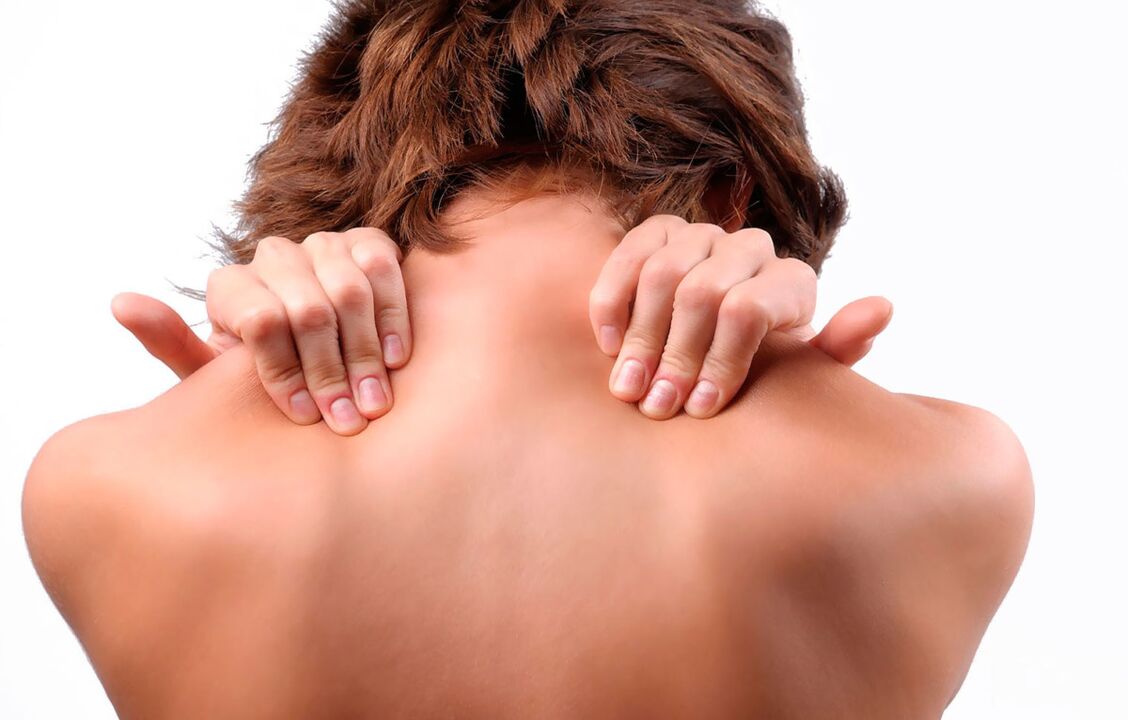
In this article, we will give detailed information about the features of cervical osteochondrosis and describe the main methods of treatment. We hope that after reading you will choose the most effective way to fight this disease and avoid radical surgery.
What is cervical osteochondrosis?

Cervical osteochondrosis is a disease in which the ovarian pulp is ossified and acts as a cushion between the vertebrae. At the same time, blood vessels and nerve roots are involved in the development of the disease.
A characteristic feature of cervical spine osteochondrosis is pain in the shoulders, occiput, neck and head. In addition, patients report dizziness, increased blood pressure, oxygen starvation, loss of sensation on one side of the tongue, and other symptoms characteristic of cardiovascular pathology. This causes contact with other specialists and significantly delays the process of diagnosing the disease.
Often, middle-aged and older people are prone to ossification of the tissues in the upper part of the spine. This is due to the incorrect distribution of dynamic and static loads on the human skeleton.
But earlier cervical osteochondrosis and itssymptomsIt has been diagnosed in people over the age of 45-50, but now the patients are much younger. Today, it affects young people between the ages of 20 and 40 due to poor diet and physical inactivity.
Currently, there is a two-pronged approach to the problem of cervical spine: it is perceived as a combination of physiological and pathological factors. In the first case, we are talking about the aging of the body under the influence of natural phenomena, and secondly, the destruction of intervertebral formations is thought to occur against the background of inflammatory and dystrophic processes caused by an unhealthy lifestyle.
Symptoms of cervical spine osteochondrosis
Problems with the diagnosis of this disease are sometimes associated with the absence of pain and the latent nature of the symptoms. In addition, a person may not feel the symptoms of the disease while taking strong painkillers on a regular basis to minimize general discomfort. All this can lead to serious disorders of the cervical joints.
Among the obvious symptoms of cervical osteochondrosis is neededtreatment,Includes: headache, high blood pressure, frequent dizziness. We will talk more about them.
Dizziness with cervical osteochondrosis

Dizziness does not always manifest itself against the background of cervical spine problems. In some cases, it indicates disorders of the brain, blood vessels and heart failure, inflammatory processes in the ear and nasopharynx, malignant neoplasms or any pathological condition of the nervous system.
Dizziness with cervical osteochondrosis and the need for its treatment may have a non-systemic or systemic etiology.
In the first case, a person may express a feeling of surprise, uncertainty, and some weakness while standing. At the same time, there is no sense of circular rotation.
In the case of systemic dizziness, in most cases, this is evidence of vestibular disease, failure of vision analyzers and other changes in the background of osteochondrosis. In this situation, the patient may feel a circular rotation of the body or nearby objects.
If dizziness occurs and the patient develops symptoms such as severe headache, numbness in the upper chest, fainting, or loss of coordination, he should be hospitalized immediately.
Headache with cervical spine osteochondrosis
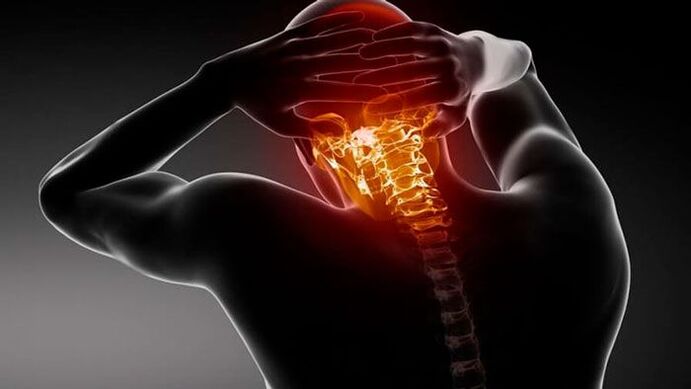
The appearance of a headache may indicate the presence of various diseases. Often, it occurs in women against the background of hormonal disorders, stressful situations, increased intracranial pressure, spasms in the brain, constricted nerve endings, inflammatory processes and other diseases.
may indicate the presence of various diseases. Often, it occurs in women against the background of hormonal disorders, stressful situations, increased intracranial pressure, spasms in the brain, constricted nerve endings, inflammatory processes and other diseases.
Pain andsound at the beginningCervical osteochondrosis, which requires treatment, is often confused with symptoms of acute disruption of blood supply to the brain, arterial hypertension or coronary heart disease. Often these symptoms occur in older people suffering from the above diseases.
You should consult an experienced specialist to determine the exact cause of the headache. In this case, it is recommended to conduct an ECG and rule out the presence of cardiovascular disease.
Pain in other localizations characteristic of cervical osteochondrosis
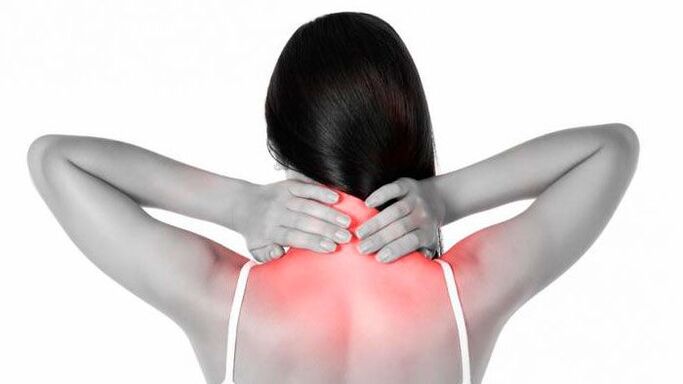
Pain in the head and back of the head is not always a sign of cervical osteochondrosis. In some cases, the discomfort can spread from the neck to the arms and shoulders. Such symptoms are sudden in nature and can occur in the background of sudden movements, after a sharp sneeze or staying in one position during a night's sleep.
If the cause of the pain syndrome is cervical spine chondrosis, it usually disappears after a certain period of time or disappears after manual therapy in the cervical spine.
It should be noted that massage in this area is carried out only after a thorough examination of the patient. With a non-professional approach, the patient is at high risk of deteriorating conditions, including disability.
If we talk about cervical osteochondrosis and the need for its treatment, patients report the following pain sensations:
- The appearance of a crisis during dizziness;
- Presence of pain syndrome in the neck;
- Sensitivity disorders and the appearance of muscle weakness in various areas of the body.
Increased blood pressure with cervical spine problem

Because cervical vertebrae are directly connected to blood vessels and nerve endings, any disorder in this area can cause an increase in blood pressure. However, such seizures are temporary, manifest themselves as short-term spasms and are not symptoms of hypertension.
In addition, if you have osteochondrosis of the cervical spine, in addition to an increase in pressure, the patient may experience other symptoms, and treatment in this case involves the use of special anesthetic drugs. These include:
- Appearance of pain in the head;
- Loss of sensitivity in the collar;
- Pain in the chest, arms and legs;
- A sharp rise in blood pressure after stressful situations, prolonged stay in one position, excessive muscle tension and other similar conditions.
A severe deterioration in the patient's condition and a sharp rise in blood pressure indicate an urgent need to see a doctor.
Stages of development of cervical osteochondrosis
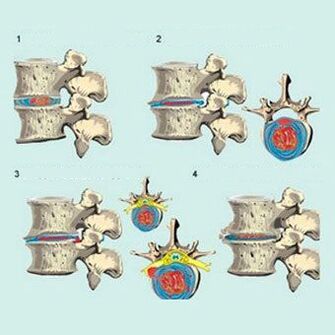
As it develops, the above disease goes through several stages accompanied by specific symptoms. We will talk about these in more detail below.
Early stage osteochondrosis
As a rule, if the disease occurs in the 1st degree, patients may have only a small discomfort. They can show pain only with sudden movements by tilting and turning their head. Many patients report increased fatigue and constant tension in the lower back and lumbar region. Treatment of cervical spine osteochondrosis in the early stages does not include admissiondrugs. . . The patient only needs treatment to recovergymnasticsWith cervical osteochondrosis and change your daily diet.
The second stage of the disease: features
The second stage of the pathology is characterized by more intense pain sensations that spread to the upper extremities and increase with bending and turning of the head. Causes of increased anxiety are: a decrease in the height of the intervertebral discs and the resulting compression of the nerve endings. In this case, the patient notes a deterioration in ability to work, the appearance of unconsciousness, increased fatigue and pain in the head.
Tertiary osteochondrosis
Radiation to the area of the upper extremities, as well as the shoulder and neck is accompanied by an increase in pain. In this case, numbness in the muscles of the hands can be observed, which is associated with the appearance of an intervertebral hernia. In addition, patients may complain of severe weakness and dizziness.
The final stage of the disease
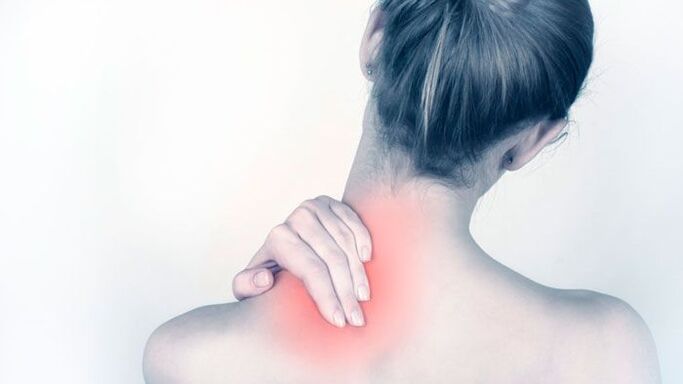
In the final stage, deep degenerative processes in the area of the intervertebral discs and their replacement by pathological tissue are felt. The need for treatment of cervical osteochondrosisin the exacerbation phasemay be due to the defeat of several segments of the spine. In this condition, patients report the presence of tinnitus, increased pain syndrome, the appearance of severe dizziness, and impaired coordination of movements.
Causes of cervical osteochondrosis
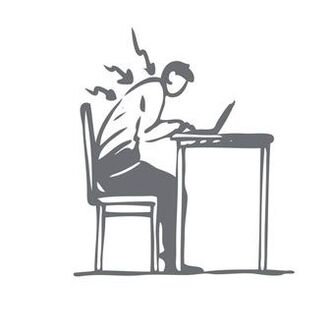
Often, the development of this pathology is associated with daily sedentary activities in which a person does not control the correct position of the body in a chair and his head is constantly tilted forward. The same can be said about the long stay of the head in the back position, which is typical for construction workers when carrying out repair work.
As a rule, excessive stress on the cervical spine inevitably leads to degenerative disorders in the area of the vertebral discs. In addition, cervical-vertebral osteochondrosis, the symptoms of this disease and the need for its treatment may be due to the following factors:
- Disorders of calcium metabolism;
- Causes of genetic nature;
- Thermal irritants;
- When engaged in extreme sports (treatment of sports injuries);
- Hypodynamics;
- One stays in one position for a long time due to professional affiliation;
- Obesity;
- Long-term stressful situations;
- Injuries to the neck and back of the head;
- Autoimmune processes that can lead to the destruction of cartilage tissue.
Switching to a healthy diet and moderate physical activity can minimize the development of osteochondrosis.
Syndromes in cervical osteochondrosis
Syndromes are represented by the simultaneous manifestation of several symptoms of the disease. As for osteochondrosis of the cervical spine, it is characterized by the following syndromes: vertebral, vertebral arteries, heart and radicular. They will be discussed below.
What is vertebral syndrome?
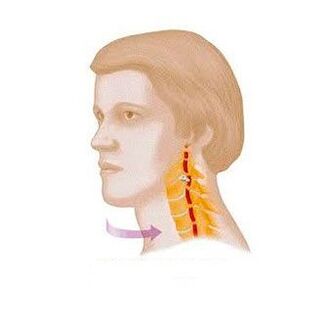
In the presence of the above syndrome, degenerative processes directly affect cartilage and bone tissue. In this case, the following three symptoms are observed simultaneously:
- Painful sensations when it is necessary to turn the neck;
- Inability to turn the neck;
- Presence of a morphological disorder in the intervertebral region or in the spinal body (X-rays are taken to determine this symptom).
If the patient does not have at least one of the above symptoms, it makes no sense to talk about vertebral syndrome.
Features of vertebral artery syndrome
The essence of the above syndrome is damage to the vertebral arteries that supply blood to the brain. It is characterized by the simultaneous manifestation of the following symptoms:
- Against the background of narrowing of the arteries, the patient may experience dizziness, high blood pressure, the appearance of tinnitus, nausea, etc. It can be felt;
- Irritation of the nerve roots, loss of sensation, the appearance of "flies" in the eyes, severe pain in the head and numbness may be observed;
- Lack of oxygen can lead to severe pain in the head, excessive sleep, decreased activity and decreased concentration.
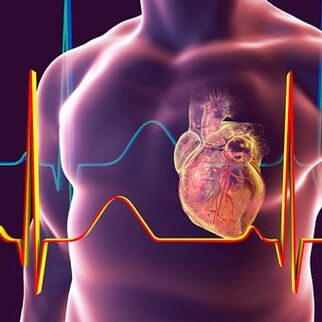
Symptoms of heart syndrome
In cervical osteochondrosis, in addition to the symptoms of the vertebral artery, the need for treatment also arises when the patient has heart syndrome. Many patients report a condition that is characteristic of coronary heart disease or similar to the symptoms of myocardial infarction. In this case, the following signs appear:
- Burning sensation and acute pain syndrome in the sternum;
- Tachycardia;
- Appearance of severe weakness, extreme fatigue and shortness of breath.
Radicular syndrome: features

It is characterized by deterioration of neuromuscular conduction. In the presence of radicular syndrome, the patient may experience loss of sensation or, conversely, severe pain syndrome. Also, the features are:
- Pain in the back of the head or, conversely, numbness in this area;
- Difficulty chewing, numbness behind the ear, feeling of fullness in the tongue;
- Appearance of symptoms of sore throat, hiccups, clavicle pain;
- Difficulty in the movement of the upper extremities, discomfort in the shoulder area;
- Disorders of the forearm and shoulder blades;
- Loss of sensitivity in the area of the fingers.
Diagnostics
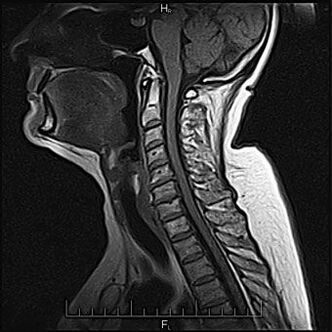
The main and most informative methods for the diagnosis of osteochondrosis include magnetic resonance imaging (MRI). Highly detailed MRI scans show the condition of not only the bone tissue of the spine, but also the soft tissues - muscles, cartilage, blood vessels, nerves and intervertebral discs. If there are contraindications to MRI (the presence of metal prostheses, pacemakers), computed tomography is prescribed, but the information content of the method is much lower in terms of the diagnosis of osteochondrosis.
Is it possible to treat cervical spine osteochondrosis?
In the case of cervical osteochondrosis, effective treatment of this disease is possible only with a comprehensive lifestyle revision, continuous prevention and rehabilitation of the sanatorium. In practice, only a few achieve this, especially in the climate of our country, when it is impossible to completely avoid hypothermia and new inflammatory processes. However, you can significantly alleviate your condition and prolong remission, even in the most advanced cases.
Treatment of cervical osteochondrosis

In the first stage of osteochondrosis, conservative drug-free treatment will help the patient. You need to adjust your posture, pay attention to the equipment of the workplace, stop work to do a few minutes of uninterrupted work every day.therapeutic gymnasticswith cervical osteochondrosis, which can be done directly on the office desk. Swimming, increased physical activity and intake of vitamin and mineral complexes will have a positive effect on the entire musculoskeletal system.
Advantages of shock wave therapy
If the patient has cervical spine and symptoms, a new method of treatment is considered the most effective - with the help of shock waves. This procedure attracts attention with its affordable cost. In addition, if a medical facility has special equipment, you can take the UHT course completely free of charge.
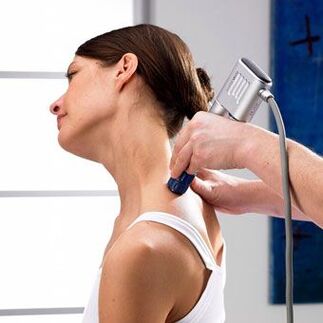
The advantages of UHT include:
- Maximum efficiency;
- No discomfort during the procedure;
- Minimal probability of side effects;
- Reducing the need for invasive treatments
- Reducing the need for medication.
Medication for cervical osteochondrosis
If you have cervical osteochondrosis and are interested in treatmentmedicineandeffective,You can find information about suitable drugs on the Internet. However, although there is no need for various medications and prescriptions, self-medication is not recommended. Most medications have side effects and contraindications, and it is important not to overdose.
Non-steroidal anti-inflammatory drugs (NSAIDs).They are used to relieve swelling and pain.
Muscle relaxants, sedatives
They are additionally prescribed to alleviate the general condition of the patient and reduce the dose of NSAIDs. You can achieve the best therapeutic effect by eliminating muscle spasms and nervous tension at the same time.
At the end of the course of treatment, doctors generally recommend taking non-steroidal anti-inflammatory drugs for a first aid kit at home, as neck pain may return during weather changes, extreme tension and stress.
Physiotherapy approaches
In cases where drug treatment is contraindicated or does not give the desired effect, and sometimes for a complex effect, the methods of physiotherapy available in both classical and alternative medicine are used. They are all aimed at relieving muscle spasms, inflammation and pain.
Acupuncture. The essence of the method is to "wake up" the biologically active points by inserting special thin needles to a depth of a few centimeters. The procedure itself is painful, but it helps to relieve pain in the spine. Several sessions are required.

Manual therapy. This method is effective if the patientpinchSymptoms related to the cervical spine were diagnosed and the need for treatment was identified. Nerves and blood vessels blocked by deformed vertebrae can be released by manually stretching the spine.
Hirudotherapy (leech). Eliminates inflammation & swelling due to biologically active substances secreted by leechStrengthens blood circulation
Shock wave therapy. Restores blood circulation and destroys osteophytes, helps cartilage tissue to return to normal structure. The patient already feels a decrease in pain and swelling after 1-2 sessions. The course of shock wave therapy covers up to the procedure, can be prescribed as part of a complex non-invasive therapy and during postoperative rehabilitation. It has a number of contraindications and is used only after a thorough examination by several specialists, including a neurologist, cardiologist and vertebrologist.
Exercises for cervical osteochondrosis
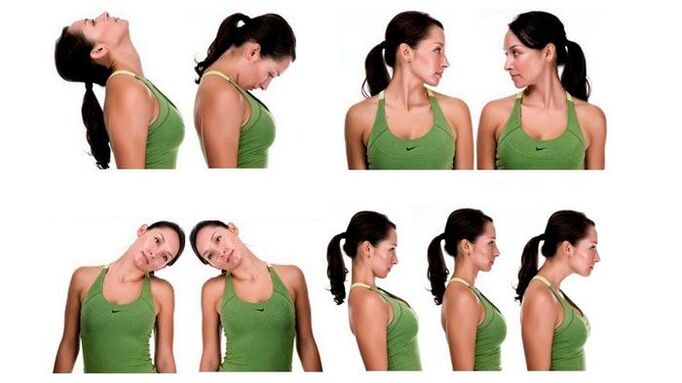
If a person has cervical osteochondrosis, dailyexercises,designed to treat this disease, will help strengthen the muscle corset, ie reduce cervical spine load. Sports therapy and preventive measures are provided at all stages of the disease. A number of exercises should be performed with caution during exacerbations.
Typical exercises for the treatment of cervical spine osteochondrosis:
- turns towards the head sides;
- head bent back and forth;
- lift your shoulders with comfortable or stable hands, hold for 15-20 seconds in this position;
- alternating tension of the neck flexors and extensors with a stationary head position.
Exercises should be repeated 5-7 times. The duration of the lesson is 15-20 minutes.
Surgical intervention
In the absence of a positive effect after 6 months of conservative treatment, spinal fusion may be indicated. The procedure is aimed at immobilizing the affected vertebral segment. This includes removal of the intervertebral disc, decompression of the nerve root and implant placement, or the creation of a physiological height of the disc space. The operation has many contraindications and side effects. For example, spinal fusion can lead to vertebral disability. Therefore, surgery is indicated only in extreme cases.
Nutrition and lifestyle
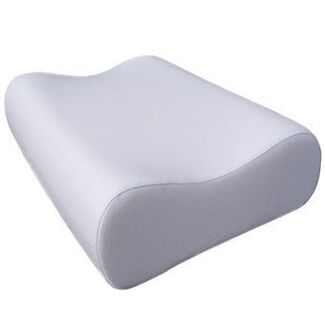
After surgical treatment of cervical osteochondrosis, a fixation collar should be worn during early rehabilitation. During conservative treatment and late rehabilitation, a diet rich in calcium and vitamins, daily therapeutic exercises for normal posture and posture correction, neck, orthopedic pillows are recommended.
Home treatment of cervical osteochondrosis
If you have been diagnosed with cervical osteochondrosis and its symptoms, you want to seetreatment at home,it should be remembered that such an independent intervention can only be applied in conjunction with procedures prescribed by a specialist.
Some experts recommend using itorthopedic pillowwith cervical osteochondrosis and use warming agents such as pepper plaster, mustard plasters and alcohol compresses. According to others, only specialexercisesand for treatmentprevention. . .
You can also seek the help of traditional medicine recipes based on the use of honey-potato compresses and dressings, which contain natural ingredients. More information about such tools can be found on the Internet. However, only an experienced and highly qualified physician can diagnose cervicothoracic osteochondrosis, identify its symptoms, and prescribe the most effective treatment.
Prophylactic measures for cervical osteochondrosis

Examination is required by the attending physician once a year. A course of shock wave therapy can be prescribed. Hypothermia and infectious diseases should be avoided, as well as working on a computer for a long time. If you are traveling on a long plane or bus, use a neck support pad to reduce muscle tension and prevent congestion. For daily sleep, use special orthopedic pillows that ensure the correct position of the head.


















































